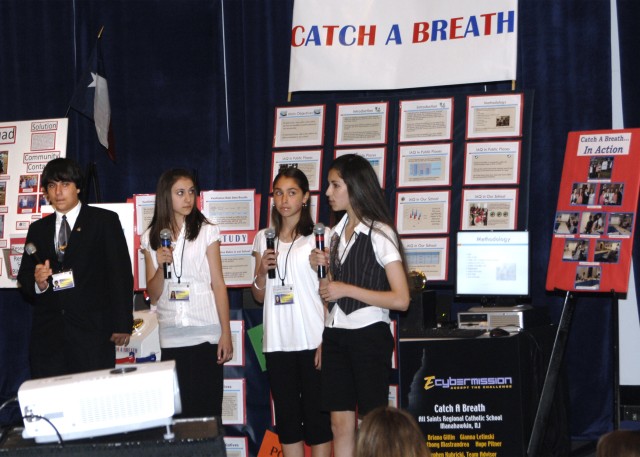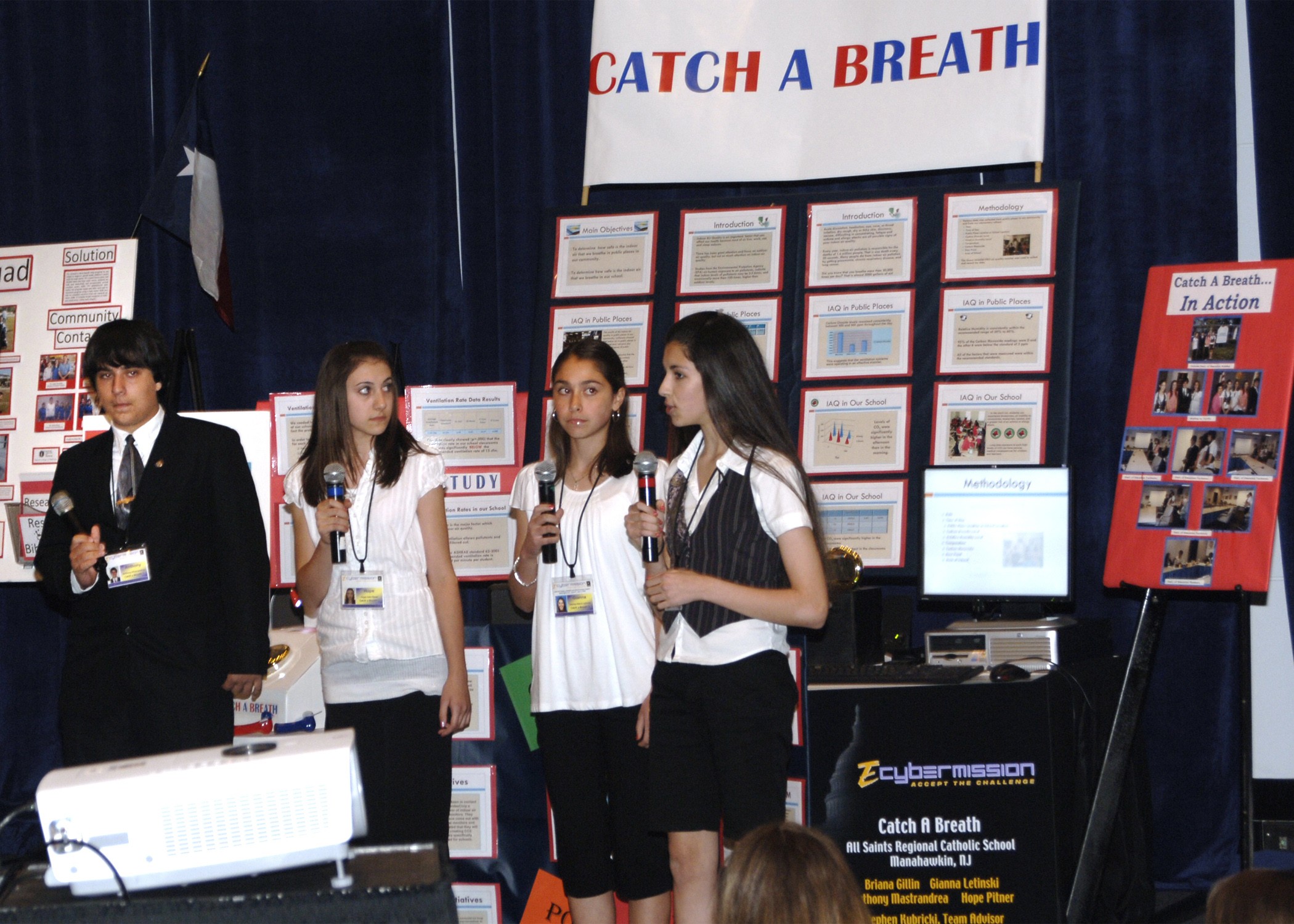
The U.S. Army's eCYBERMISSION program, a free, Web-based, science, math and technology competition managed from Aberdeen Proving Ground, announced its four national winning teams on July.
"We congratulate our national winners and all of the students who submitted eCYBERMISSION projects this year," said Dr. Michael Doyle, U.S. Army Research, Development and Engineering Command's Program Manager for eCYBERMISSION. "It is vital to our nation's future that we place emphasis on the importance of science, technology, math and engineering [STEM] education for our youth."
The national winners presented their projects to a panel of Nation Judges, who have varying backgrounds in science, math and technology. The national first-place winning teams and their project and a synopsis of their projects are as follows:
Sixth Grade National First Place Team: "Dragonface," Charlotte Latin School, Charlotte, N.C. - Team Advisor Sharon Oats and team members Harrison Bell, Clyde Nelson and Andrew Zoutewelle were recognized by judges for their efforts to make children's Halloween costumes less flammable. The team read several articles about children being badly injured by fires caused by candles in jack-o-lanterns, and after researching possible solutions, attempted to create a Borax solution that would protect costumes. The students soaked costumes in their solution, and with the help of a local fire department, recorded the time it took for each of the materials to burn. Although they found that the Borax solution did not protect polyester costumes, they did find that it caused cotton to burn less quickly. The students were interviewed by a local television station, and hope to continue to spread awareness about the dangers of flammable Halloween costumes.
Seventh Grade National First Place Team: "BabyBots," Stone Middle School, Melbourne, Fla. - Team Advisor Richard Regan and team members Conway Bolt, Ryan Regan, Judith Reese and Taylor Snyder were recognized by judges for the team's investigation into the problem of flood water contamination in its area. The students conducted experiments on three living organisms to see if they were affected by the following common flood water contaminates: copper, fertilizer, unused motor oil and E. coli. After studying their results, the students found that diluted amounts of toxins can have a negative effect on living things. In the future, the "BabyBots" team plans to use this information to conduct outreach to their community about the dangers of contaminated floodwater and hope to create an inexpensive home floodwater test kit.
Eighth Grade National First Place Team: "Super Sports Squad," Pin Oak Middle School, Bellaire, Texas - Team Advisor Jamie Scott and team members Kate Beittenmiller, Emily Christians, Maddie Cooper and Emily White were recognized for the team's efforts to include children with special needs in its school's sports programs and extracurricular sports activities. The students created lesson plans using adaptive physical education for soccer, kickball, tee ball and basketball. They found that their participants' motor skills increased throughout the course of their program and hope to promote the program to others in their community.
Ninth Grade National First Place Team: "Catch a Breath," All Saints Regional Catholic School, Manahawkin, N.J. - Team Advisor Stephen Kubricki and team members Briana Gillin, Gianna Letinski, Anthony Mastrandrea and Hope Pitner were recognized by judges for the team's investigation into indoor air pollution in its community and school. The students used an indoor air quality monitor and tested the carbon monoxide, carbon dioxide, humidity, temperature and dew point levels in public places as well as at their school. The students found that the carbon dioxide level in their school was twice the "safe level," as stipulated by the Environmental Protection Agency. In response to their experiment results, the students invented a carbon dioxide monitor for their school and hope to get it patented to be used in all schools to protect students from indoor air pollution.
National winners for eCYBERMISSION will receive $5,000 in U.S. EE Savings Bonds, in addition to the $3,000 in U.S. EE Savings Bonds awarded to all regional first-place winners. The members of the 12 other finalist teams will receive an additional $3,500 in U.S. EE Savings Bonds for competing at the eCYBERMISSION National Judging and Educational Event, which is a free series of educational enrichment activities and events for national finalists held in Washington, D.C.
This year, more than 12,000 students registered for eCYBERMISSION and 2,005 teams submitted their research for scoring. Now in its seventh year, eCYBERMISSION has awarded more than $6.8 million in U.S. EE Savings Bonds in support of the science, math and technology leaders of tomorrow. Since its inception, more than 58,000 students from across the country, in U.S. territories and Department of Defense Education Activity schools worldwide have participated in the competition.
Registration for next the 2009-2010 eCYBERMISSION competition opens on Aug. 1.
For a complete listing of the 2008-2009 regional winners or for more information, visit www.ecybermission.com.

Social Sharing